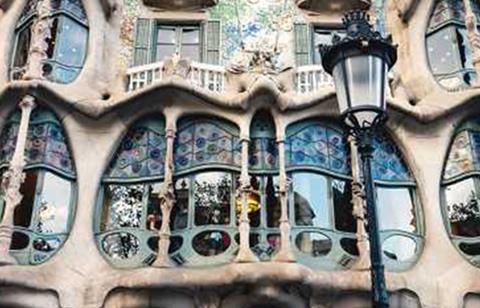
By Emily Plummer, Marketing Director
What architects can teach you about employee experience: The persuasive nature of design, and why HR must get creative.
I am a designer. I am also the daughter of a well-respected international architect, and I have always been taught the importance of design, in everything. And, more importantly, the problems it can solve.
There is a German term, ‘Gesamtkunstwerk’, literally meaning 'total work of art', which is "the notion that all types of art, including painting, music, architecture, literature, etc. can be collated into one interrelated subject, project and study."
However, the term is most commonly associated with architecture, where notable buildings such as the Hotel Tassel by Victor Horta designed every element, from the staircase to the door handles; each conforming to the organic aesthetics associated with the Art Nouveau period; each combining to form an entirely well-rounded and immersive experience.
If we look around us, everything has creative investment, and our exposure to it is unavoidable. From the psychological consideration given to the front of your car design to personify human facial characteristics with headlight placement; the desirability of design pedalled by Apple for a phone which Android users will tell you isn’t as powerful as theirs, but is packaged up in a way which is hinged on the fear of missing out; to fantastically creative campaigns involving small mammals to promote the traditionally dry topic of insurance. All rooted in design.
When we consider that we all have an experience at work, it would therefore seem logical that this mass market exposure to design be considered by HR, and that they take the opportunity for the inevitable convergence of the two; by getting creative and start thinking like a designer.
Whether you have a good experience at work or not, we all have a feeling with the way we engage with the place and people we work with. In the same way an architect has a vision and an overview of the build process, HR need to view the holistic landscape of employee experience. The consideration and control of the parts which combine to make the whole is essentially an extreme form of UX in every conceivable element of the journey.
Design solves problems. In all forms, it has the ability to influence the behaviour of consumers, and impact the decision-making process. Nowhere is this more prevalent than in the digital space where it can be teamed with personalised content. Strategically-placed product recommendations gave Amazon a 35% increase in sales revenue; imagine if this thought process was applied to your people strategy, and the results it could deliver.
When you get design right, especially in a digital environment, it creates a series of well-considered micro-interactions which combine to create a cohesive overarching feeling you have for a particular brand, and then they refine them to make them even better. Most of the time, these interactions are so seamless; no one even notices. Imagine if your employees had this type of experience with your company.
Retailers are making huge investments in reading a consumer’s digital body language to increase shopping basket conversions. Designers and marketers are joining up the digital and physical experience to ensure consistency, and improve brand perception. This needs to happen for your people; we need to think in this way; we need to orchestrate the future of work.
There isn’t always one defining element which can be pinpointed, but more a collection of designed touchpoints which accumulate to an overall landscape, each building on the last, and each building trust in the process. But if you don’t get them right, they become a collection of missed opportunities, and your bottom line will suffer.
Also, you must always consider it in the context of the market, and how to think about your product in terms of glocalisation, defined by Sociologist Professor Roland Roberston as a “global outlook adapted to local conditions.” While this can literally be applied to international offices, you should also think about the cultural context and assimilation required in terms of diversity within any given office, and have technology which can support that level of personalisation.
To this very point, there was a great presentation from Ritanbara Mundrey - who’d previously worked for Nestlé - entitled “It takes many notes to make a symphony.” Mundrey makes a fantastic case for using cultural insights to incorporate brands into local markets. Discussing her experience in India, she recounts the challenge of making coffee culturally relevant in a tea-dominated setting. Whereas coffee is a foreign word, chai (tea) is part of local vernacular and has a relevancy beyond the drink; it encompasses wider habits and practices central to the Indian way of life.
She argues that, to get the full local-level picture, different forms of research must be used: “what you get are individual notes from the different forms of research. When you put it together, you get the insight.” Rather than be overwhelmed by the sheer amount of data available, businesses need to get their data to “work harder for them.”
Then, in collecting this data and aligning it with the cultural knowledge that is needed, brands can gain a deeper understanding of the category and context.
So, in the same way mid-19th Century architecture looked at something in totality, we must use this same 360-view of employee experience. We need to understand the patterns of behaviour our employees go through, and we should understand whether it’s a good behavioural pattern, or not. If it is good, how do we replicate and scale it? If it’s bad, how do we redesign it to make it better?
Employee experience is a collection of moments, when you have the ability to influence these by reducing the friction, you can drive real organisational change, and that’s exciting! Like this article? We thought you might. You can read more from Benefex here.























